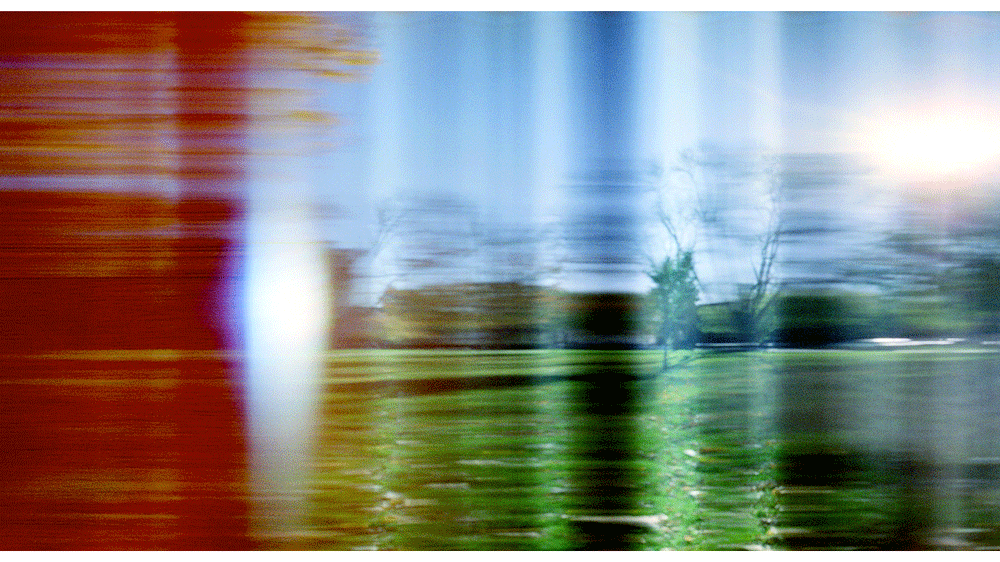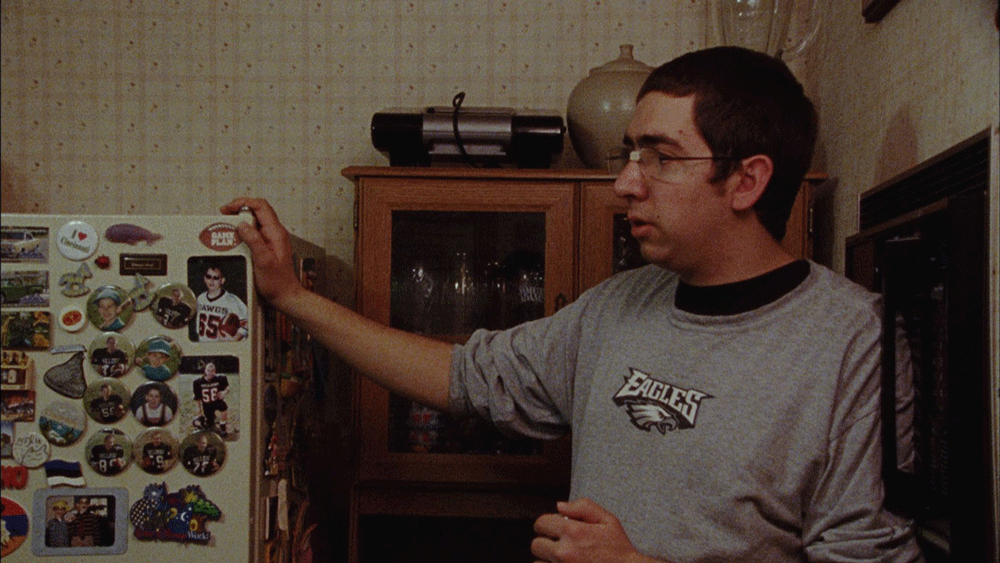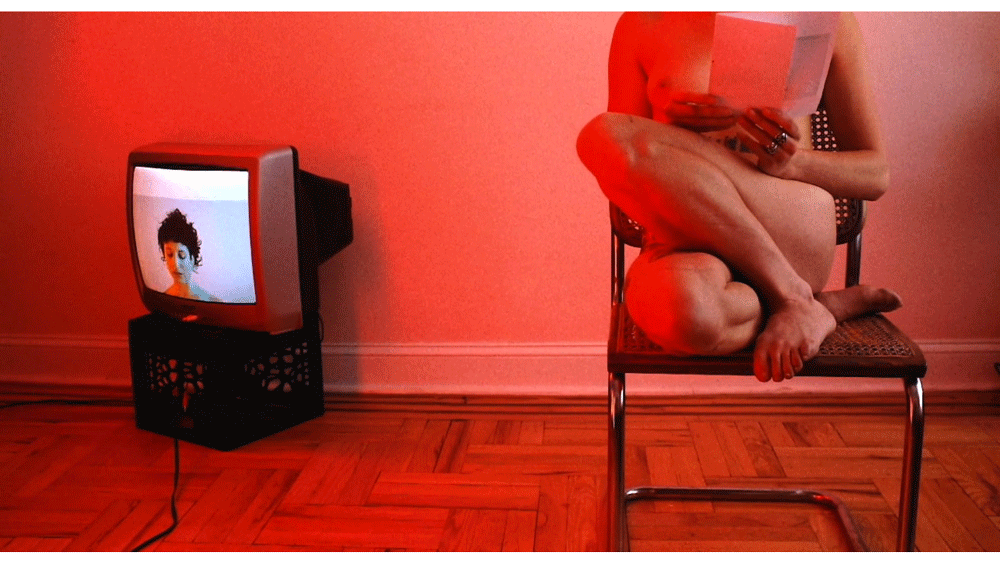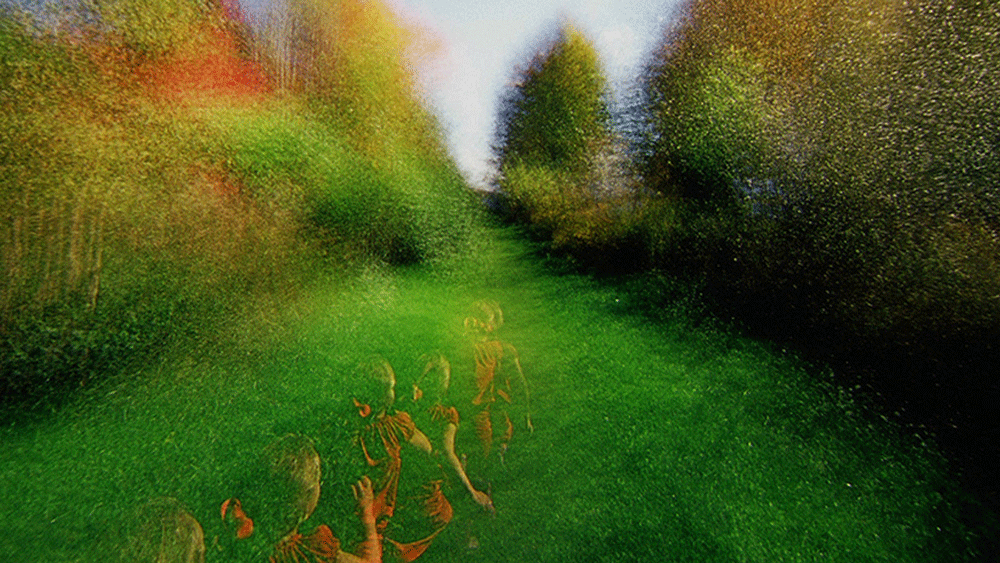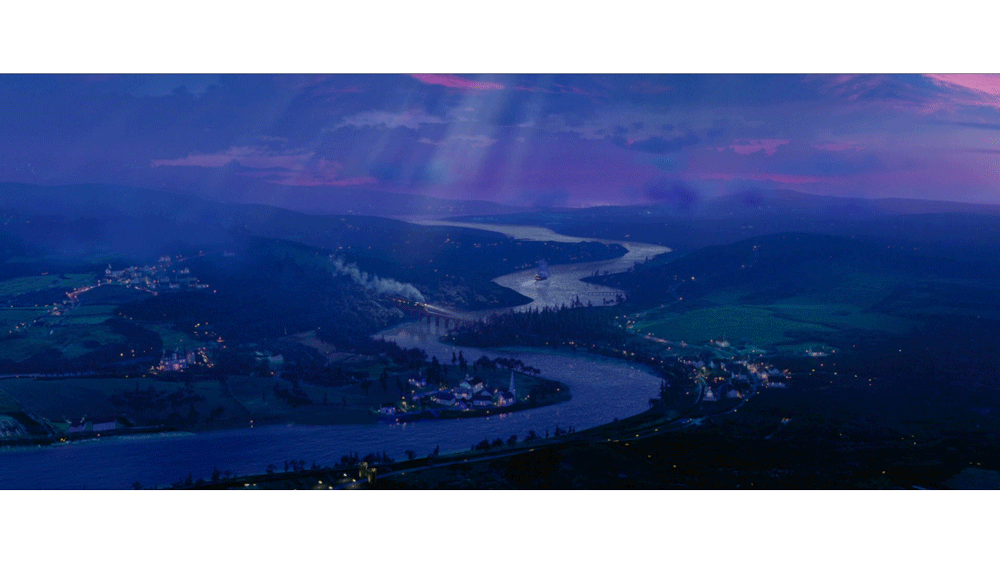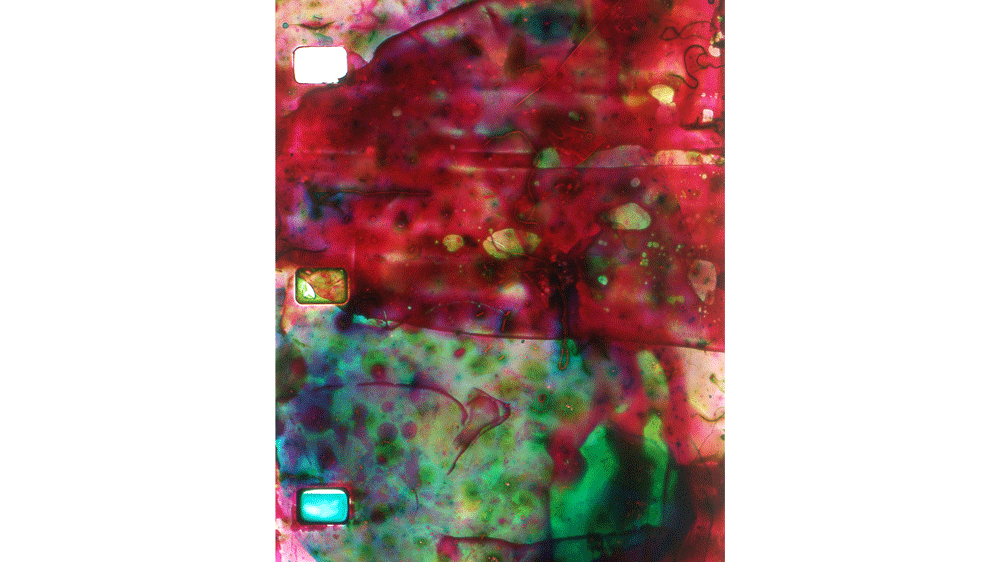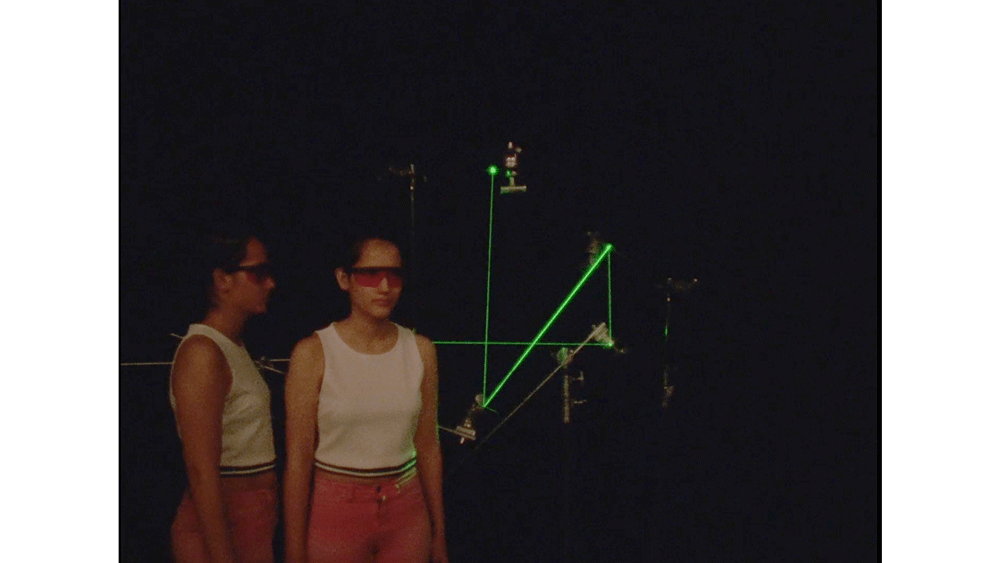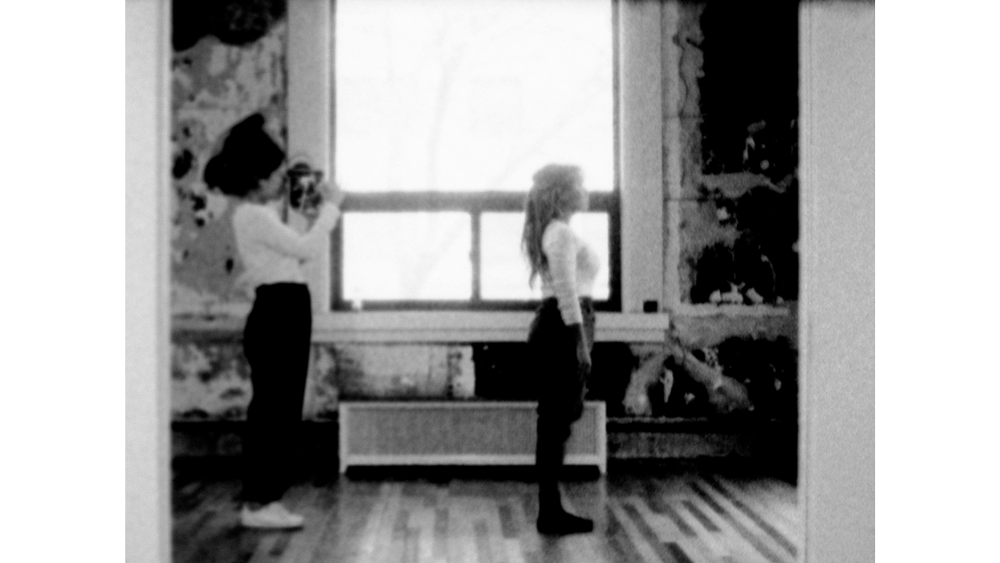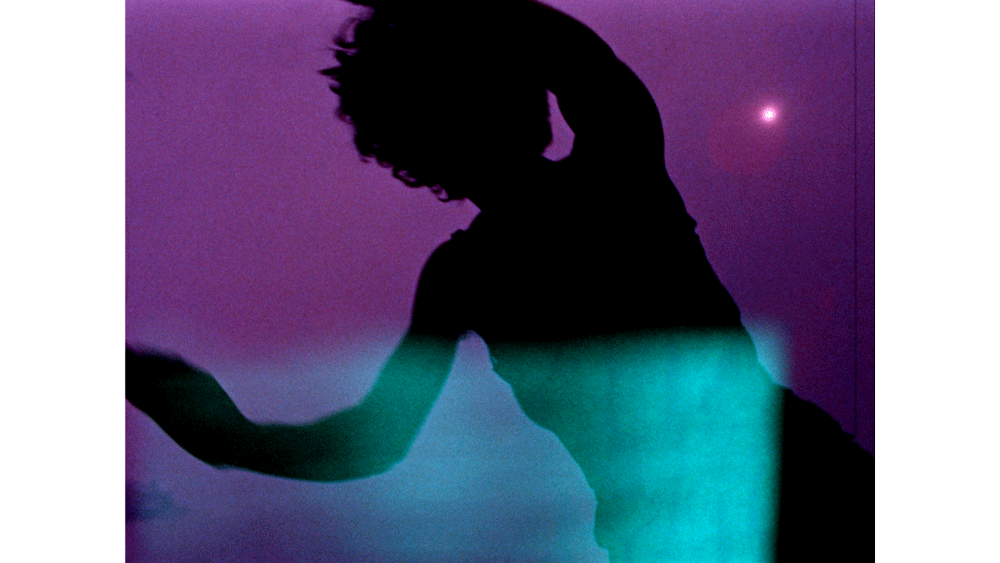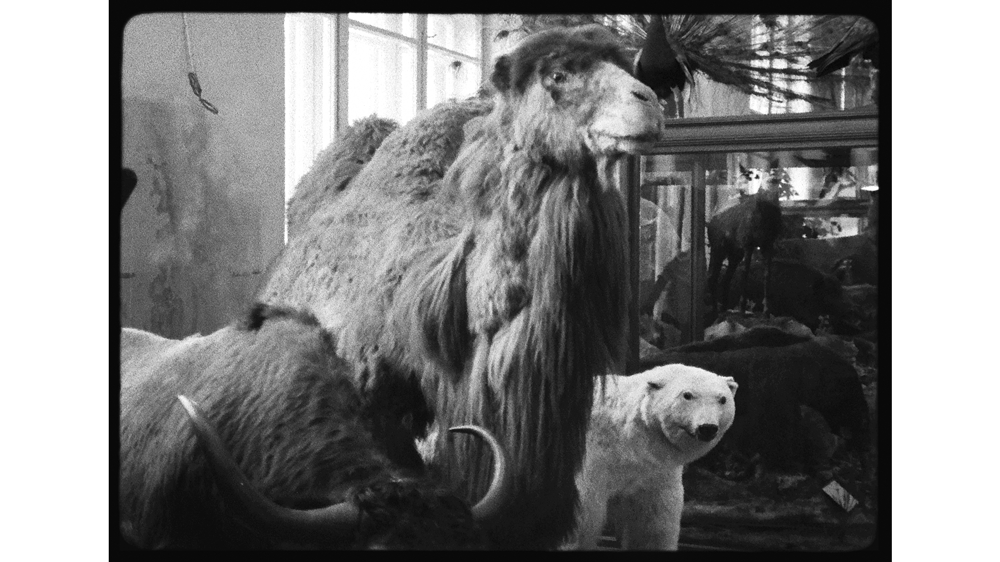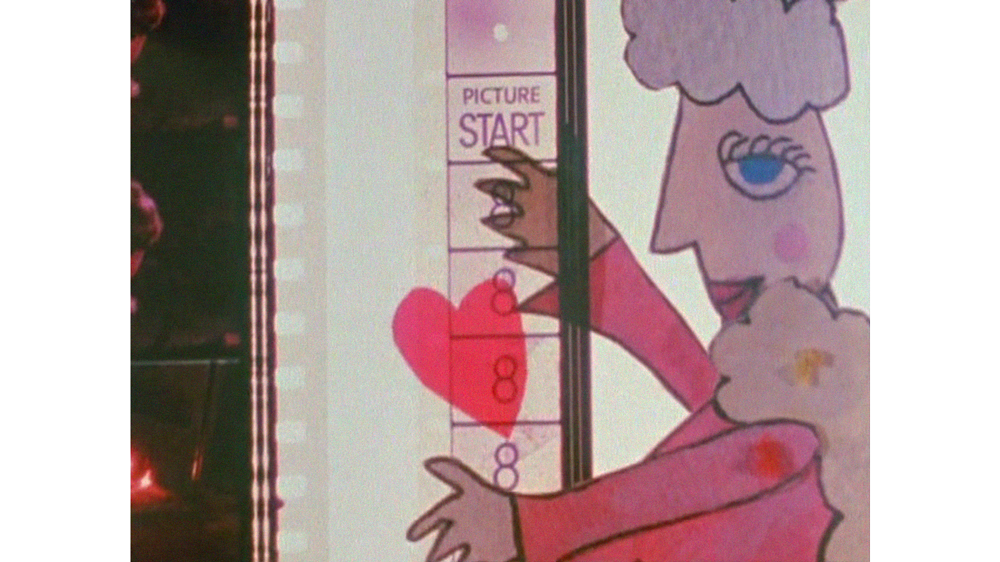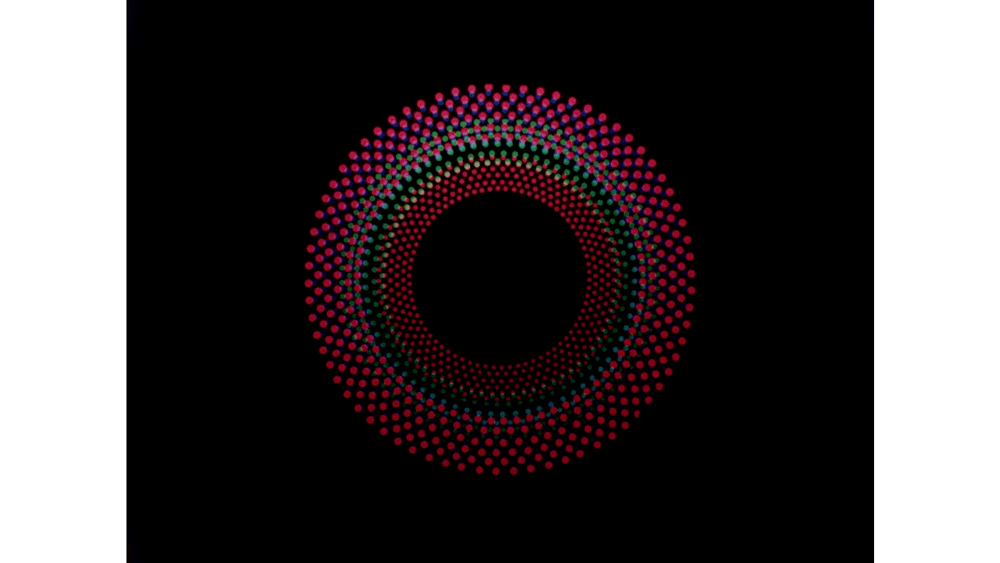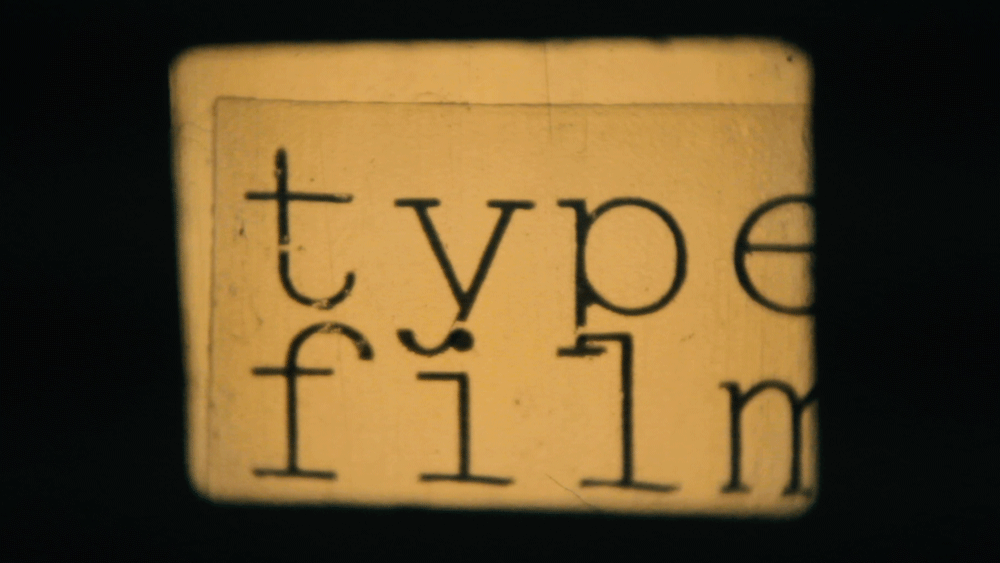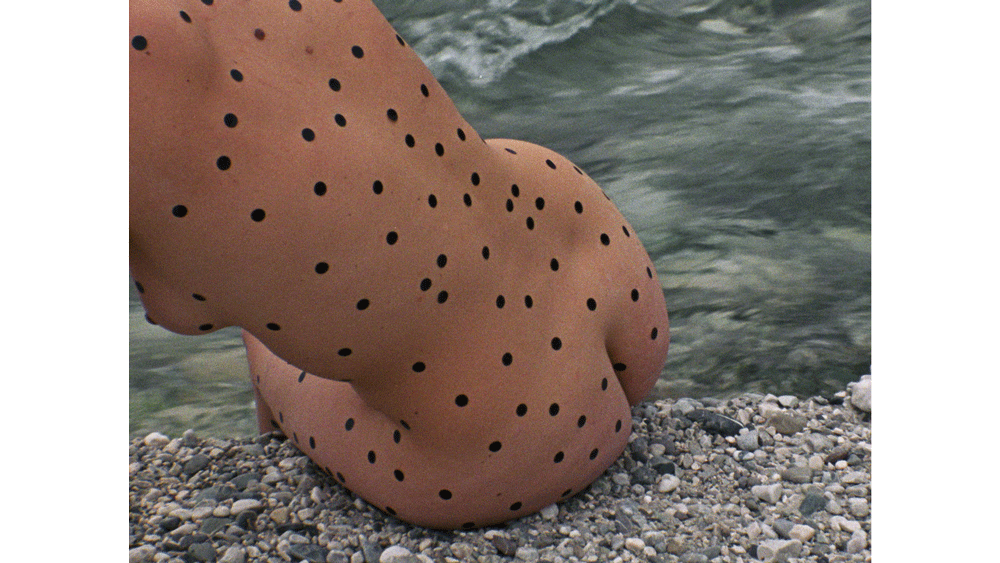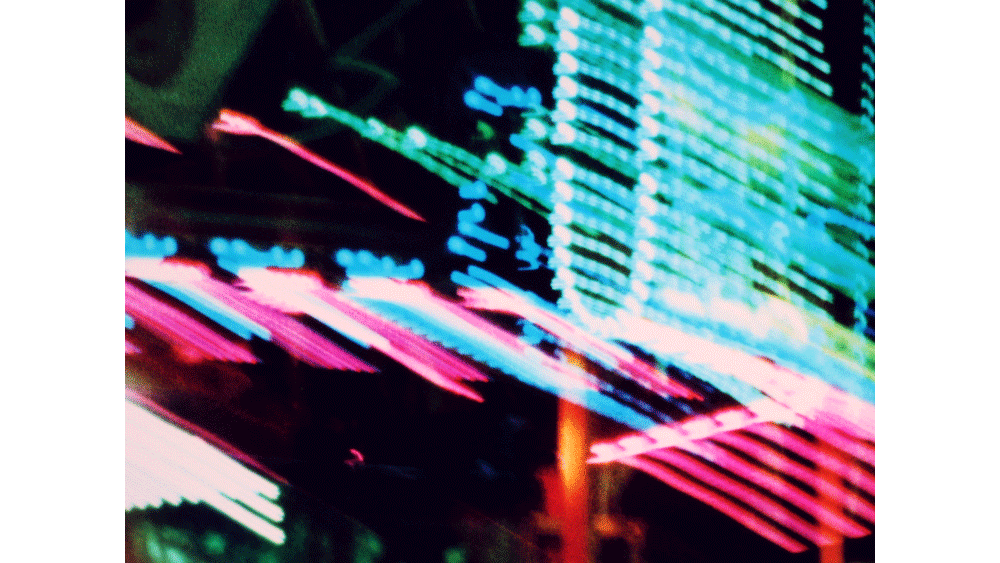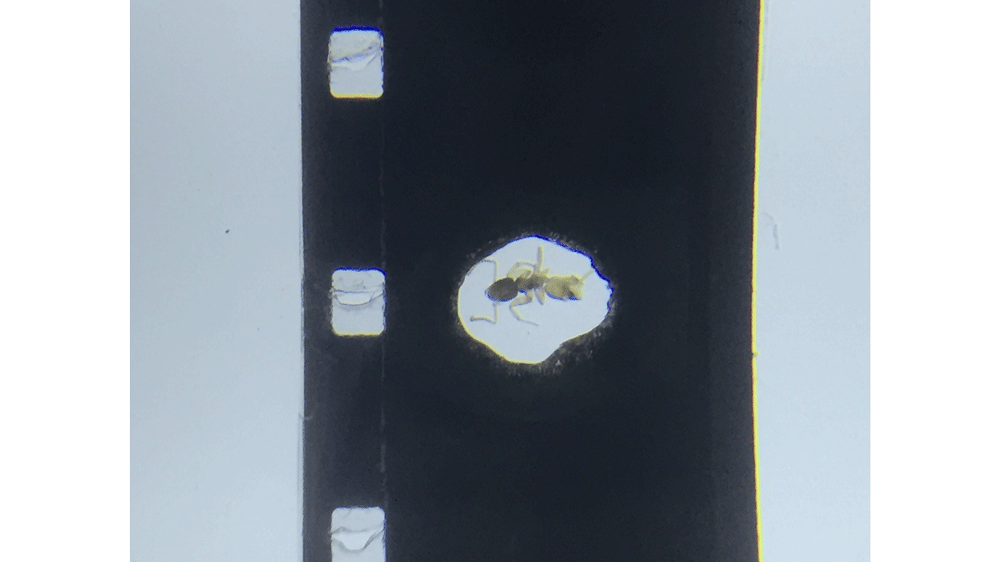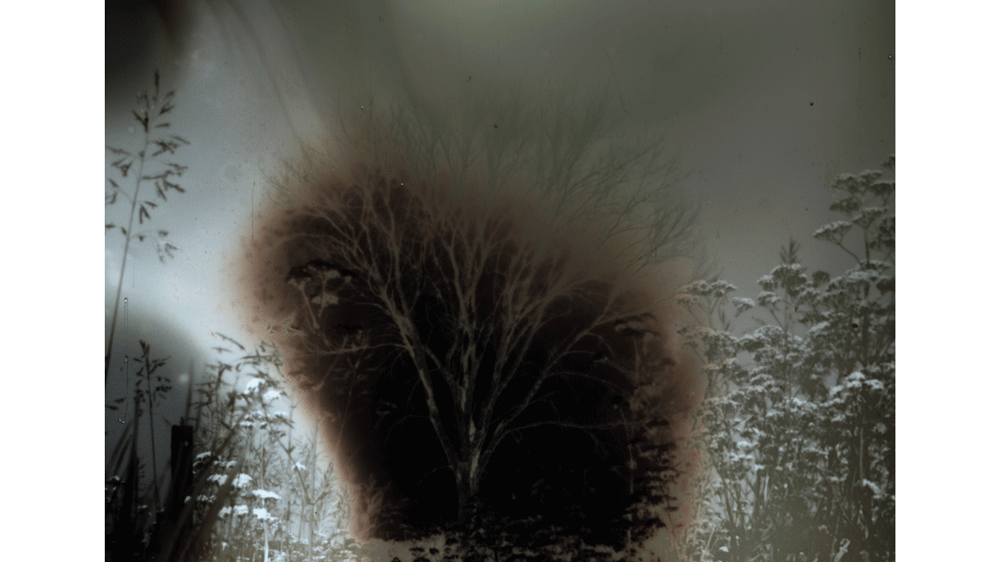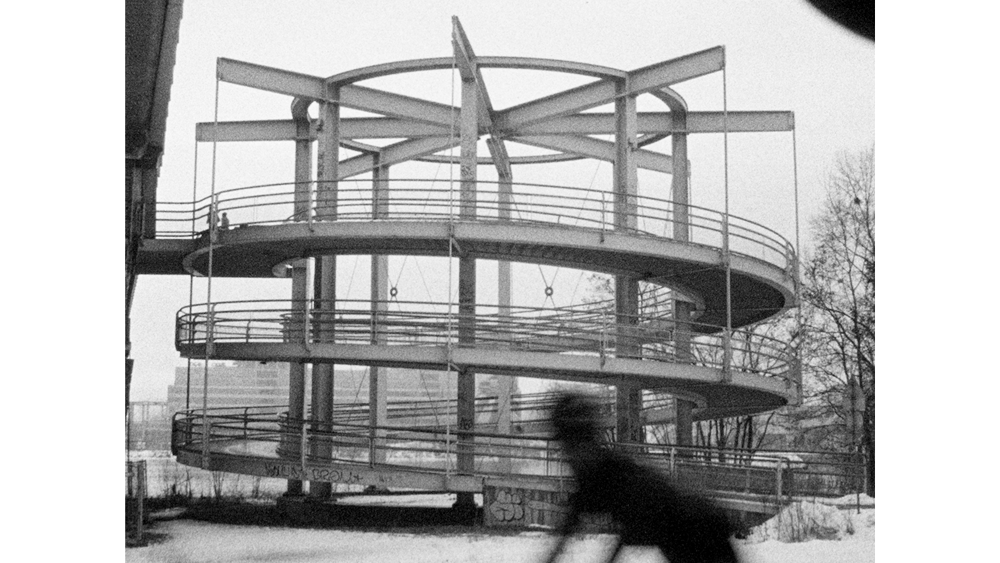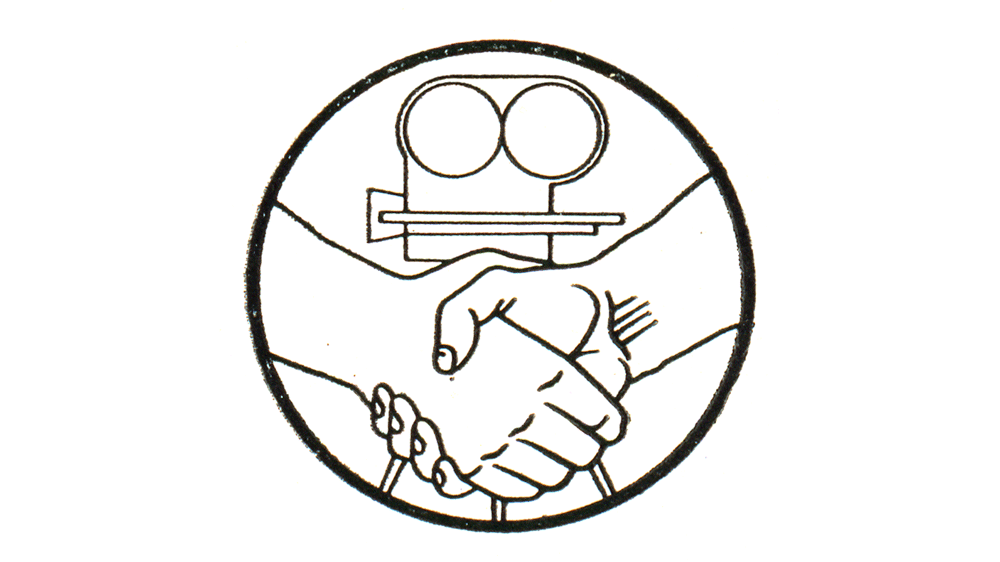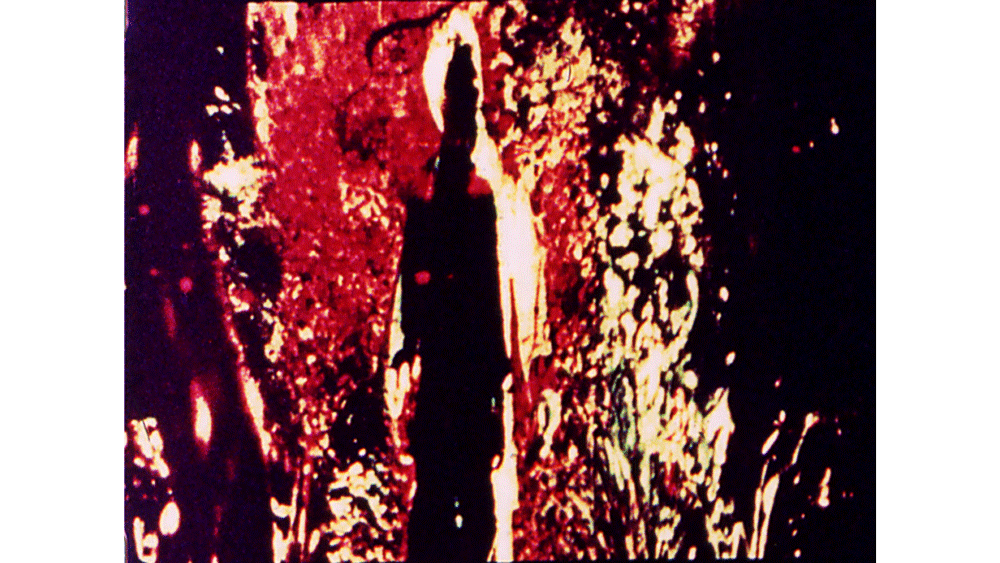Celluloid Now took place September 15 – 18, 2022.
The Chicago Film Society is proud to welcome you to Celluloid Now: four days of screenings, workshops, and other events showcasing the work of analog filmmakers and artists, alongside archival rediscoveries and restorations.
Jump to a day on the schedule:
Accessibility: Program 3 & Program 7 will have American Sign Language interpretation by trained interpreters. For additional accessibility requests please contact us a minimum of 72 hours before the program.
All Celluloid Now locations are wheelchair accessible. Please contact us for more information about building accessibility or refer to individual venue websites:
• Chicago Cultural Center
• Constellation
• Gene Siskel Film Center
Accessibility questions? Email Rebecca at rlyon@chicagofilmsociety.org
THURSDAY 9/15
7 PM
Program 1: 35mm: Industry Standard
Date: Thursday, 9/15
Location: Gene Siskel Film Center
Time: 7:00 PM
Tickets: $12 at the door, or buy in advance (General Admission; discounts offered for students and Gene Siskel Film Center members)
Ten years ago, if you walked into a random first-run movie theater, there was still a chance that whatever you were watching would be projected on 35mm motion picture film. Ten years before that, it was almost a guarantee. Across the entire 20th century, there was nothing unique about seeing a film projected in 35mm. If a filmmaker shot their movie on 16mm or video and they wanted it seen widely, it was a given they’d blow it up to 35mm. In the present day, 35mm sits in an odd place, now a specialty format most exhibitors are no longer equipped to screen, when in recent memory it was just the way every theater received Twilight movies and Coca-Cola ads.
There may be fewer theaters equipped for 35mm than there were a decade ago, but filmmakers haven’t left it for dead quite yet. Artists are still finding new and exciting things to do with this hundred-year-old format, and working in another medium you’d be hard-pressed to replicate something like Alexandre Larose’s brouillard – passage #14 (a single 1000-foot magazine of film featuring 39 overlapping exposures of the same ten minute shot) or Mike Gibisser’s Slow Volumes (filmed on a custom 35mm camera made with projector parts supplied by the Chicago Film Society). The recent availability of inexpensive direct positive 35mm prints, printed directly from a video source file, has opened the format up to artists who would’ve never been able to afford to strike prints of their work during 35mm’s heyday (including a number of artists whose work originates on video, as seen in this very program with the films STONE and Elegy for J.M.). Plenty of film traditionalists are still kicking around too, still editing on Steenbecks and printing from A/B rolls. A few years ago they’d get called fetishists but can you name a 2022 release that looks as good as the print of Ted Fendt’s Broken Specs showing here? 35mm no longer enjoys the massive cultural presence it once had but surveying this collection of films drawn from the latest (and perhaps strangest) chapter in the format’s history, it’s hard to not feel excited by what the future has in store for it.
Films included in program (all 35mm):
Slow Volumes (2019) — Mike Gibisser — 5 min.
STONE (2021) — Drew Hanks & Riley Lynch — 20 min.
Broken Specs (2012) — Ted Fendt — 6 min. — Printed directly from A/B rolls!
Marriage Story (2020) — Jessica Dunn Rovinelli — 9 min.
brouillard – passage #14 (2013) — Alexandre Larose — 10 min.
Twelve Tales Told (2014) — Johann Lurf — 4 min.
One Way to Find Out (2012) — Scott Stark — 6 min.
Potemkin Piece (2022) — Justin Clifford Rhody & friends — 2 min.
New print made for this screening!
Elegy for J.M. (2019) — John Klacsmann — 4 min.
The Watchmen (2017) — Fern Silva — 10 min.
A Proposal to Project in Scope (2020) — Viktoria Schmid — 8 min.
keep that dream burning (2017) — Rainer Kohlberger — 8 min.
Plus a selection of ads, trailers, and other surprises!
Runtime: Approx. 120 minutes plus an intermission
FRIDAY 9/16
7:30 PM
Program 2: 16mm Visions
Date: Friday, 9/16
Location: Constellation
Time: 7:30 PM
Tickets: $15 at the door, or buy in advance
On Friday night, we bring our 16mm projectors to Constellation, a venue perfectly suited to 16mm’s beautiful, boxy frame. A delight for all senses, this special “double feature” program features insights of vision, self, sound, and light in a vibrant and lively collection of shorts from international and local filmmakers.
Part 1 features a film made using thousands of Avery labels, a film made out of bees, a dance film where the camera dances too, the burning of an old house, a hand processed love letter to a frozen pond (from the artist: “The cameras failed miserably/wonderfully in the cold.”), and one of the most inane pieces of advertising we’ve ever seen. In My Dad, Heather McAdams creates a portrait of her father out of found footage and original material which will make you laugh and cry harder than anything in a very long time.
Part 2 brings us closer to textures brought to reality, beaches not worth missing, and voids we never knew were possible. Filmmakers have highlighted leopard print in all the right angles, and longing lustful emotions that could only be brought out with the specific trance of 16mm film. We hope this selection of films brings you out of your skull on your first Friday night with Celluloid Now.
Films included in program (all 16mm):
PART 1
Impasse (1978) — Frank and Caroline Mouris — 10 min.
New 16mm preservation from Yale Film Archive! Preserved in 2020 by the Academy Film Archive and the Yale Film Archive, with laboratory services by Fotokem, Audio Mechanics, and DJ Audio.
6018|Dance (2022) — Kioto Aoki — 6 min.
Featuring live musical accompaniment by Jamie Kempkers!
The Last Skate (2017) — Sandy McLennan — 5 min.
Burn Out the Day (2014) — Sasha Waters — 4 min.
not (a) part (2019) — Vicky Smith — 6 min.
My Dad (2010) — Heather McAdams — 22 min.
PART 2
I Don’t Want to Be Anywhere Near it (2021) — Lori Felker — 3 min.
In anaglyph 3D!
He Needs Dark to See (2021) — Abigail He — 2 min.
Days In Between (Kaiserpanorama) (2019) — Marianna Christofides — 4 min.
Into the Realm of the Night (2022) — Patrick Müller — 6 min.
Bachelorette Party (2013) — Justin Dean, Aaron Greenbaum, & Micah Vassau — 14 min. — One-of-a-kind video to 16mm print.
At the edge of the curtain (2022) — Antoinette Zwirchmayr — 10 min.
Unsubtitled print, printed English translation provided.
Bathers (2019) — Douglas Urbank — 4 min.
Inflated (double) struggle (2018) — Jenny Baines — 3 min.
Void Vision (2018) — Alexander Stewart — 8 min.
16mm Selfie (2019) — Karan Talwar — 3 min.
Plus selections from the Chicago Film Society’s film collection and more!
Runtime: Approx. 120 minutes plus an intermission
SATURDAY 9/17
12:00 PM
Program 3: Where do film prints come from?
Date: Saturday, 9/17
Location: Chicago Cultural Center (Studio Theater)
Time: 12:00 PM
Tickets: FREE
Any analog filmmaker can tell you making a film is a difficult thing, and every projectionist knows getting a film on screen is no easy task either. But what about all the stuff that happens in between? How does a film become a film print? What is it a film lab actually does? Can I do any of that stuff at home? John Klacsmann, archivist at Anthology Film Archives, and filmmaker and handmade cinema specialist Tatsu Aoki join the Chicago Film Society to share some of their 16mm handiwork and talk about all that goes into making the things we love to project, along with ways creative and adventurous filmmakers have found to create their own projectable film prints right at home. Filmmakers and film enthusiasts alike will get a kick out of this rare peek behind the curtain at a vital but undervalued step between making a film and screening it. We’ll cap off this program with a sampling of one-of-a-kind DIY 16mm prints, made using non-traditional processes.
Films included in program (all 16mm):
Madame Winger Makes a Film: A Survival Guide for the 21st Century (2004) — Helen Hill — 10 min.
Nebula II (1971) — Robert Frerck
Preserved by Anthology Film Archives with support from Cinema Conservancy. Accompanied by a film preservation talk with John Klacsmann.
Selected 16mm works by Tatsu Aoki
Accompanied by a handmade cinema talk with filmmaker Tatsu Aoki.
Quaker City Home Movie: Pressing Cider (2013) — Taylor Dunne — 3 min.
Home-processed super 8, optically printed with a soundtrack to home-processed 16mm
REGAL (2015) — Karissa Hahn — 2 min.
Printed onto clear 16mm leader using a home inkjet printer
Typefilm an armory show (2021) — João Reynaldo — 4 min.
Typed onto clear 16mm with a typewriter
The Window (2020) — Stephen Bonnell — 3 min.
Filmed with a direct-sound Auricon camera, processed reversal at home
Sheebop! Shebopp! Sheebopp! (2019) — Cameron Worden + Jiayi Chen — 3 min.
Home-processed super 8, digitized with a soundtrack and custom printed direct positive to 16mm
The Spider & the Fly (1938) — 13 min.
16mm preservation from Chicago Film Society, from an original direct-sound reversal 16mm print
Runtime: Approx. 90 min.
2:15 PM
Program 4: Mysteries
Date: Saturday, 9/17
Location: Chicago Cultural Center (Studio Theater)
Time: 2:15 PM
Tickets: FREE
For years now, we’ve been awash in high definition digital images, infinitely replicable and able to be produced by anybody with a smartphone. Alternately, shooting on 16mm motion picture film is difficult, tedious, and expensive, and what you get out of it is an image that’s usually softer and grainier than what even the lowest grade consumer video cameras can produce these days. So why do people still go through the effort? There is a peculiar and haunting beauty about this world which can only be properly seen in 16mm. Maybe the magic is in all those processing chemicals? The analog filmmaker has always had a bit of the alchemist about her. Whatever it is, that dark sorcery can be found in scads through all the films seen here. Across this program you’ll find disjointed narratives which dredge up uncanny feelings far removed from the digital era, like Ben Balcom’s metaphysical melodrama Notes from the Interior, Antoinette Zwirchmayr’s silent reckoning with the natural world Oceano Mare, and Taylor Dunne’s woozy family portrait Corn Mother. Elsewhere, Anna Kipervaser’s How a Sprig of Fir Would Replace a Feather and Cherlyn Hsing-Hsin Liu’s A Study of Fly riff on the visual language of scientific research to strange and often bewildering effect, raising more questions than they answer. The latest digital cinema technology may offer more lines of resolution than you can count, but for preserving and amplifying the abundant mysteries which undergird our daily lives, there’s still no substitute for 16mm.
Films included in program (all 16mm):
How a Sprig of Fir Would Replace a Feather (2019) — Anna Kipervaser — 8 min.
Notes from the Interior (2015) — Ben Balcom — 11 min.
Oceano Mare (2020) — Antoinette Zwirchmayr — 6 min.
Wasteland No. 3: Moons, Sons (2021) — Jodie Mack — 5 min.
Corn Mother (2012) — Taylor Dunne — 6 min.
A Study of Fly (2018) — Cherlyn Hsing-Hsin Liu — 13 min.
Plus selections from the Chicago Film Society’s film collection and more!
Runtime: Approx. 60 min.
4:00 PM
Program 5: A Miniature Screening of Miniature Films
Date: Saturday, 9/17
Location: Chicago Cultural Center (Studio Theater)
Time: 4:00 PM
Tickets: FREE
“Consumer grade” movie formats have come and gone but few have stuck around, or accumulated a mountain of goodwill, like super 8 has. It may be delicate, impossible for most venues to screen, and only marginally cheaper than 16mm, but all the same, we can’t deny the hazy and incomparable beauty of our favorite littlest gauge. Plenty of filmmakers agree with us, including, as seen in this program, many born decades after the format was introduced in 1965. You won’t see super 8 projected in public very often these days but that doesn’t mean there aren’t great films still being made with it. With this little screening, we’re offering you a peek at the enormous creative energy coursing through the world of super 8 filmmaking today, from Colby Richardson’s intermedia synesthesia experiment Convolve, to Jimmy Schaus’s domestic wildlife study Chuncho (Orange Tabby), to program closer Tetsuya Maruyama’s ANTFILM, a one-of-a-kind print made without a camera which, as its title suggests, physically brings together ants and film to spectacular effect.
Films included in program (all super 8):
Convolve (2016) — Colby Richardson — 4 min.
Sound from a converted live video feed of the screen.
Still Feeling Blue About Colour Separation (2015) — Christine Lucy Latimer — 2 min.
Chuncho (Orange Tabby) (2021) — Jimmy Schaus — 6 min.
Revém natura (2012) — Ж — 7 min.
Double projection super 8!
ANTFILM (2021) — Tetsuya Maruyama — 2 min.
Runtime: Approx. 20 min.
SUNDAY 9/18
11:00 AM
Program 6: Celluloid Open Mic
Date: Sunday, 9/18
Location: Chicago Cultural Center (Studio Theater)
Time: 11:00 AM
Tickets: FREE
Calling all analog filmmakers! Miss the Celluloid Now submission deadline? Sitting on an older film that you want to get back out into the world? An experiment you’ve always wanted to share with an audience? A class project you think deserved to be seen outside of school? The Celluloid Open Mic is your opportunity to haul out your old prints for another rodeo. For two hours on Sunday, the floor is yours to share anything you got in 16mm, super 8, or 8mm. Just sign up for a timeslot, hand over your print, and we’ll run it for all the world to see! Not a filmmaker? You’re invited too! Come see what the wider world of analog cinema has to offer in this open showcase of films made by your friends and neighbors.
Space for the Celluloid Open Mic is limited. To sign-up, please fill out this form and specify ALL time slots you are available for.
We ask that filmmakers plan on only screening ten minutes (or less) of film material. The Chicago Film Society will contact all participating filmmakers to coordinate delivery of prints. While we cannot guarantee we’ll be able to screen everybody’s work, we will try to accommodate any walk-ups with film prints who have not signed up in advance.
To sign up for the Celluloid Open Mic, filmmakers MUST have a 16mm, super 8, or 8mm copy of their work! Chicago Film Society CANNOT run video files, blu-rays, HD DVDs, DigiBeta, MiniDV, Pixelvision, VCD, U-matic, VHS-C, Hi8, or 1-inch open reel video tape!
Runtime: Approx. 120 min.
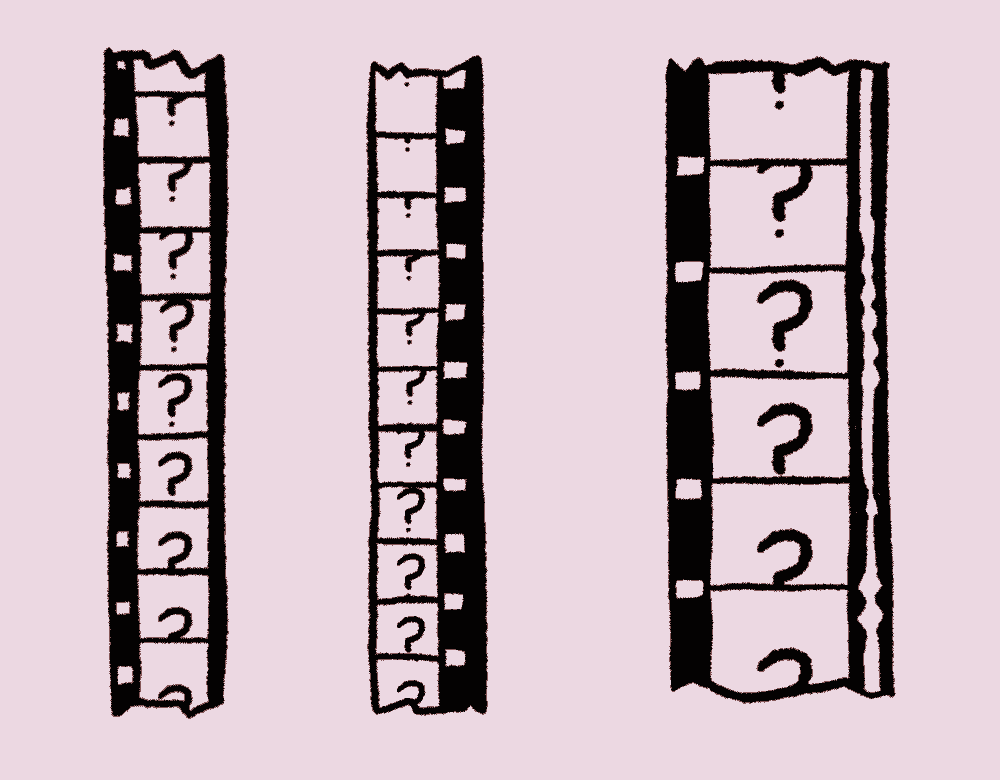
2:00 PM
Program 7: Projector Anatomy 101
Date: Sunday, 9/18
Location: Chicago Cultural Center (Studio Theater)
Time: 2:00 PM
Tickets: FREE
For the mechanically curious, watch as we perform a live 16mm projector dissection. We’ll go over the film path in detail, demonstrate how optical sound works, tear a machine apart, attempt to put it back together, and show some of our favorite test films.
Runtime: Approx. 90 min.
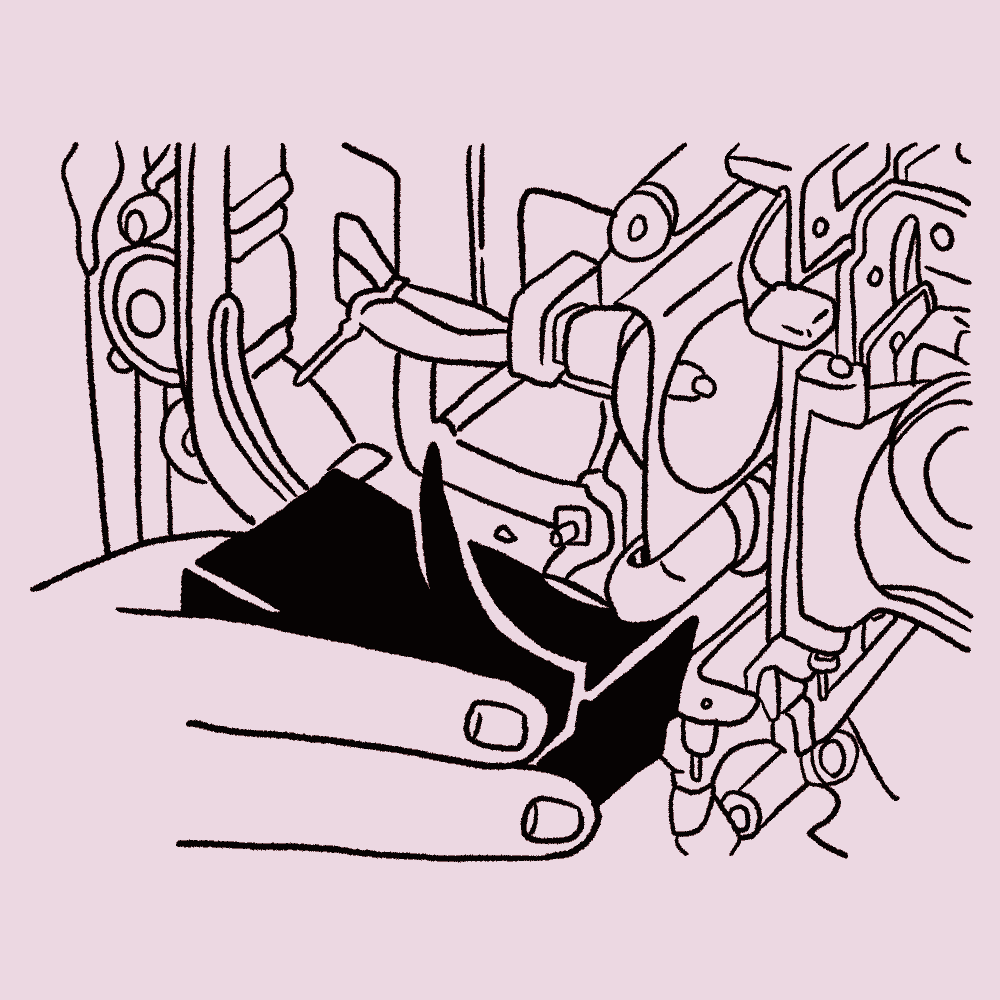
5:00 PM
Program 8: Films That Walk, Films That Talk
Date: Sunday, 9/18
Location: Chicago Cultural Center (Claudia Cassidy Theater)
Time: 5:00 PM
Tickets: FREE
If you want to get a sense of just how extraordinary the aesthetic breadth of 16mm filmmaking is today, look no further than this Whitman’s Sampler of a screening. Walter Forsberg’s Bandera Churubusco condenses an entire guidebook on analog filmmaking into a single extraordinary minute of animation. Mike Rollo’s Eidolon brings a healthy dose of psychedelia to the landscape film genre. Heather Trawick gets in the pit with her demolition derby doc Isn’t it a Pity. Eva Claus’s Radspirale presents the humble piece of titular civic architecture as worthy of the city symphony treatment. Rose Lowder captures some of the greatest slapstick performances of the 21st century within a colony of turtles in Tartarughe d’Acqua. Filling out this program are two essential works of underground cinema presented here in beautiful new 16mm prints: Incantation, Peter Rose’s virtuosic experiment in in-camera editing, and Walk For Walk, Amy Lockhart’s profoundly juvenile and impossibly funny animated masterpiece.
Films included in program (all 16mm):
Bandera Churubusco (2018) — Walter Forsberg — 1 min.
Eidolon (2020) — Mike Rollo — 4 min.
Isn’t It a Pity (2020) — Heather Trawick — 8 min.
Radspirale (2017) — Eva Claus — 3 min.
New 16mm print courtesy of Chicago Film Society, struck specially for this screening.
Incantation (1971) — Peter Rose — 9 min.
New 16mm preservation from Academy Film Archive!
Walk For Walk (2004) — Amy Lockhart — 10 min.
New 16mm print!
Tartarughe d’Acqua (2016) — Rose Lowder — 25 min.
Plus selections from the Chicago Film Society’s film collection and more!
Runtime: Approx. 60 min.
7:00 PM
Program 9: 2x16mm: Double the Fun
Date: Sunday, 9/18
Location: Chicago Cultural Center (Claudia Cassidy Theater)
Time: 7:00 PM
Tickets: FREE
After a weekend of running films on just one Eiki, we’re pulling out all the stops and bringing a SECOND one into the mix for a whole program of double projection 16mm films. Whether moving outside of the boxy 1.33:1 native to standard 16mm projection or doubling down with overlapping compositions, the artists featured here have found some extraordinary possibilities in this DIY form of spectacle. Christopher Harris and Daïchi Saïto bring their own spin to genres synonymous with cinematic grandeur with, respectively, the miniature widescreen biblical epic 28.IV.81 (Descending Figures) and the layered kung fu decoupage Never a Foot Too Far, Even. Hangjun Lee provides a pocket history of Korean and Japanese educational cinema with 바람이 부는 까닭 Why Does the Wind blow, compiled from his personal 16mm print collection. We close this program, and Celluloid Now, with a new restoration of Paul Sharits’s avant-garde classic Razor Blades, a maximalist flicker film that in under half-an-hour screams through several features’ worth of sex, violence, and toilet humor.
Films included in program (all 2x16mm):
Never a Foot Too Far, Even (2012) — Daïchi Saïto — 14 min.
28.IV.81 (Descending Figures) (2011) — Christopher Harris — 3 min.
바람이 부는 까닭 Why Does the Wind blow (2012) — Hangjun Lee — 12 min.
Razor Blades (1968) — Paul Sharits — 26 min.
New 16mm restoration from Anthology Film Archives!
Runtime: Approx. 60 min.
Celluloid Now is supported in part by the Illinois Arts Council Agency, a Grants for Arts Projects award from the National Endowment for the Arts, and a Multi-Year Program Support grant from The Andy Warhol Foundation for the Visual Arts. Programs at the Chicago Cultural Center are presented in partnership with the Department of Cultural Affairs and Special Events.
SPECIAL THANKS TO:
John Klacsmann of Anthology Film Archives; Jesse Brossoit of Canadian Filmmakers Distribution Centre; Seth Mitter of Canyon Cinema; Thavary Krouch of the Chicago Film Office; Mike Reed, Nolan Chin, Margaret McCarthy, and Nicole Muto-Graves of Constellation; Justin Dean and Olivia Babler; James Bond of Full Aperture Systems; Mark Johnson of the Harvard Film Archive; Rebecca Fons and Michael Wawzenek of the Gene Siskel Film Center; Justin Dennis of Kinora; Miguel Armas and Mariya Nikiforova of Light Cone; Isabella Reicher and Gerald Weber of sixpackfilm; Gabriel Wallace; Clay Mills; Open Produce; Ben Ruder of the Film Studies Center at the University of Chicago; Brian Meacham of Yale Film Archive.
Particular thanks to the lab technicians, projectionists, filmmakers, cinema engineers, collectors, and celluloid diehards who have brought analog film into the 21st century for another hundred years, and to the millions of audience members whose lives will be changed because of it.
THE END

